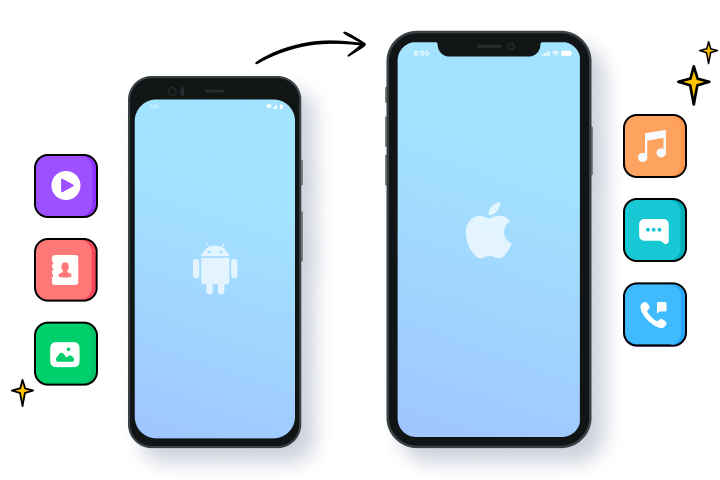Did you know that the value of the smartphone market in the United States is almost $400 billion? Market analysts expect the smartphone market to increase to $500 billion by 2026.
There is a lot that goes into delivering a highly capable smartphone into your hands. From design to sourcing materials, to installing software, this is an arduous process. It involves several moving parts and many hands.
But what exactly goes into the process of smartphone manufacturing?
In this article, we will walk you through everything you need to know about what happens to take a phone from the factory to the end smartphone user.
Design and Prototype Creation
For the creation of most smartphones, everything begins with the design. First developers want to create a prototype so that they can test and engineer it for production on a mass scale.
What will it look like? What will the dimensions be, and how heavy will it be in the consumer’s hands?
These are just a few of the major questions that smartphone designers try to answer when developing a prototype. Usually, these goals try to match abstract ideas that come from business executives. These executives understand the market and are spending a lot of money to ascertain what the consumer wants.
Ultimately, a product will pass through the pipeline that meets all of the requirements and larger company objectives. Usually, a separate electronics team will design a special display screen. They match the display to the dimensions and battery requirements.
They can develop a prototype that will ultimately go back to the executive suite for final approval.
Putting In The Software
Every phone needs an operating system. It’s essential to have hardware inside the phone that will play well with the operating system.
In general, mass production can’t begin until the company has determined that the current prototype is completely compatible with common operating systems in use. These include major OS systems like Android or iOS. Once the full phone has been built and connected, testing can begin.
Testing: The Golden Rule of Smartphone Manufacturing
To bring a smartphone product to market, the design team needs to test, test, and test again. There are a variety of tests on the hardware of the device. These include tests to see how the device holds up with common use mistakes like falls, drops, or spills into water or complete immersion.
There are plenty of software tests that also need to take place. These make sure that apps load and data security concerns are eliminated. Testing ensures that all functionality proceeds as planned when using the device.
Once the software and hardware capabilities are sufficiently tested, the device enters a new phase.
Mass Production
When the prototype has been designed, and testing is well underway or completed, manufacturers start to look to produce the device on a massive scale. This usually means starting talks with third-party providers, known as original equipment manufacturers.
These are major deals. Overall, millions and millions of dollars can change hands between several parties in determining a few key questions. These parties decide who will produce the device, for how long, and at what scale.
Larger smartphone manufacturers are able to do this in-house. They have created internal pipelines to mass development. However, this is the exception rather than the norm.
Packaging
Once the smartphone has been built and tested in quality control at these external manufacturers, the primary company will develop packaging. This involves including any other additional accessories like chargers or user manuals.
Companies give out information to third-party manufacturers to develop specialized cases in advance. If you’re interested in the current palette of specialized designs offerings, you can check it out here.
Packaging can be very important in branding a customer experience upon opening the device for the first time.
Most tech giants understand the importance of this initial moment. They spend significant energy perfecting the experience.
Many iPhone or Android users probably remember the moment that they picked up their most recent phone, and what it was like to take it out of the box. This is exactly what the companies want for their customers.
Shipping the Devices
Once the box and packaging have been completed at a mass scale, it’s time to ship out. Shipping is an extremely complicated industry. It involves many distribution channels, retailers, and other coordination concerns.
The extent of the complexity of international shipping can’t be covered in this article. But it is essential to ensuring a proper business objective: timely delivery. Manufacturers rely on this web of transportation mastery to make sure that the smartphone gets to the end-user at a reasonable time and pace.
More and more emphasis is being placed on sustainable packaging and shipping processes. Customers are demanding more of businesses to make sure that their practices are congruent with future life on this planet. Green energy has never been as important as it is today.
What It Takes to Put a Smartphone on Your Doorstep
At the end of the day, smartphone manufacturing is a complex process. From internal design, testing, and executive approval to packaging and shipping, great energy goes into making sure that you receive the highest quality product.
In a competitive market like the smartphone industry, your experience matters most. Companies will do everything they can throughout this process to create the best final product for you to open up.
If you enjoyed this article about affordable smartphone manufacturing, you can check out our other articles on different types of smartphones here on thenewsgod.com!





![branding-predictions-for-2020-[article]](https://thenewsgod.com/wp-content/uploads/2019/12/11260/branding-predictions-for-2020-article-150x150.jpg)









